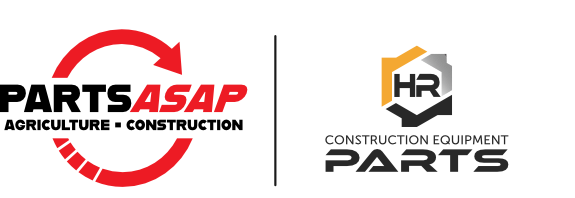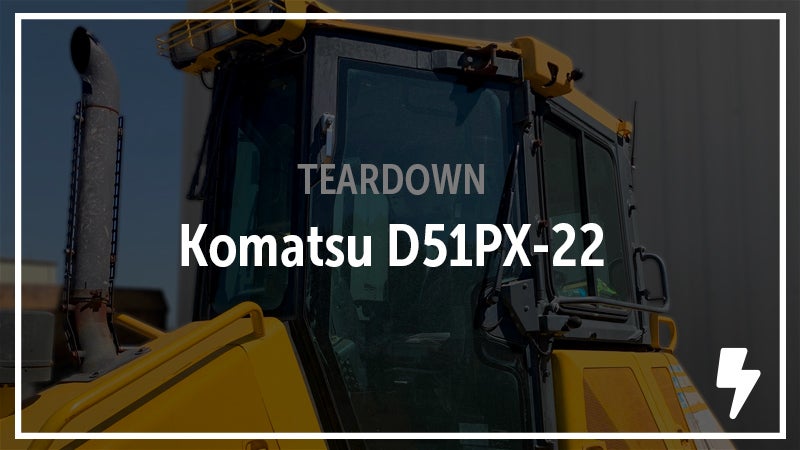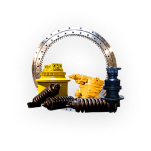
How to Rebuild a Final Drive | Komatsu WA500-6 Final Drive | Komatsu PC400LC-8 Final Drive
At H&R, we rebuild hundreds of final drives every year and, along with our new aftermarket final drives, we’re proud to provide a solution that will get our customers back up and running fast. If you’re aiming to rebuild your own final drive or just interested in our process, read along and we’ll show you how we rebuilt a final drive for a Komatsu WA500-6 wheel loader and a Komatsu PC400LC-8 excavator.
Quick and Short Final Drive Rebuild Tips
Keep a Record of Your Final Drive Rebuild
We think every heavy equipment machine is as unique as its owner and … well … every final drive is as unique as its machine. Disassembling your final drive is not a simple task, but if you’re doing it it’s a great opportunity to plan for the next step — putting it all back together. Our final drive experts draw from their own deep knowledge of parts and processes, but some simple notes and pictures (along with this guide!) can always provide an extra level of insight.
Clean and Prep Your Final Drive Parts
When it comes to their parts and their projects, the H&R final drive team is … meticulous … which is just a nice way of saying they’re a little obsessed about their rebuilding and reconditioning and you’ll see that obsession starts in their prep. If you’re working in your own shop, you might think, “Hey, sure these parts are oily, greasy, and dirty now, but they’re only going to get that way again when I’m back up and running.” But skipping the cleaning process can stop you from noticing other issues, introducing material that will degrade performance, and just starting you on a path of problems in assembly.
Prep Your Rebuilding Space
It might sound like a simple step, but getting your space set-up is important. You’ll want to make sure you have oil and silicon on hand to lubricate as you go along and plenty of space to lay out your parts. In the video above, you’ll notice the Komatsu final drive is no small part, so a good swing crane helps you focus on alignment and fit and not using every muscle in your upper body trying to get things up, moving, and in perfect place.
Think ahead about how you’ll handle the finished part, too. Depending on the final drive you’re working on, you don’t want to end up at the end of assembly wondering how you’ll get the finished product to the waiting machine.
Now, Putting Everything Together
» Remember: Every final drive is different. We’ve included two videos in this post, but you’ll want to lay out your plan and your process to suit your own specific final drive.
Now on to our H&R final drive experts. Follow along as each rebuilds a final drive.
Rebuilding an Excavator Final Drive for Komatsu PC400LC-8
- Install the main bearings and the floating seal
- Move the sprocket hub into position
- Lubricate the seal to ensure an easy fit
- Remember: Oil is your friend and will help things come together without force.
- Lower the sprocket hub onto the travel motor
- Add the lock ring and tighten
- You’ll spin it into place by hand and then lock it into place.
- Notice: In the video, our H&R final drive expert uses two properly sized punches to get a little extra leverage as he spins the lock ring.
- Ensure the final lock is tight and secure.
- An extra set of hands helps counteract your force.
- Add more oil to lubricate before installing the O-ring, then install the O-ring and make sure the fit is tight.
- Now, you’re onto installing the inner planetary. It should fit smoothly into the sprocket hub.
- Install the sun gear and test it out. A few simple spins by hand will help ensure everything is coming together and fitting together smoothly.
- Add the thrust washer
- Install the ring gear
- Install the outer planetary.
- Notice: Watch again for fit. In the video above, you’ll see our final drive expert gets the outer planetary almost into place and only a smooth nudge is needed to seat the outer planetary into its final position.
- Prep the ring gear for silicone and add silicone to seal the cover to the ring gear
- Remember: Silicone will adhere better to a clean surface and ensure everything keeps out of your clean, rebuilt final drive.
- Add oil to lubricate the thrust washer
- Install the sun gear
- Drop the final drive cover on and bolt into place.
Rebuilding a Wheel Loader Final Drive for a Komatsu WA500-6
- Place the first bearing race into the main housing and then flip over the housing and insert the second bearing race.
- Install half of the floating seal into the retainer.
- Install the O-ring onto the housing and apply grease to it.
- Keeping things well greased will ensure things go to together smoothly and fit together perfectly.
- Position the retainer onto the housing and bolt it on.
- Install the second half of the floating seal and install the outer dust seal into the break housing. A rubber mallet helps get a tight fit without damaging any parts.
- Oil the floating seal and start assembly on the brake.
- Install the clutches into the brake setup and oil each clutch as its inserted.
- Install the O-ring into the brake housing.
- Apply a threadlocker adhesive and install the bolts.
- Install the 2 piston seals.
- Grease the piston seal on the outside of the brake piston and the piston seal on the inside of the brake housing.
- Insert the brake piston.
- Clamps and a rubber mallet will help keep the brake piston aligned and nudge it into place for a smooth and proper fit.
- Install the piston springs
- The piston spring contains a pin with a lock hole. To install, screw the piston spring through and put the lock pin in the lock hole. Release the piston spring to bring it back up until the lock pin is in place.
- The lock pins hold the tension to the piston springs.
- Position the brake piston setup on top of the clutch setup and double check the O-ring has stayed in place. Bolt the brake position setup and the clutch setup together.
- The rebuilding of the brake housing and the planetary housing are now complete so you’ll move now to assembling and installing the new planetary, starting with adding brackets to keep it together during the axle assembly.
- The first step in assembling the planetary is to install the bearing races into the gears.
- Using a hydraulic press, pins are pushed into the planetary carrier through each of the planet gears.
- The final drive is now ready to be installed on the rear axle, followed by the sun gear, and the end cover.
If you’ve made it here, we hope you found some helpful tips and insight in these final drive rebuilding videos from our final drive rebuilding shop. We support nearly 6K construction equipment machines and we offer the largest selection of new and reconditioned final drives and final drive parts in North America — we’re also truly passionate about our parts and you can probably tell from our videos.
If you’re looking for a final drive solution, talk to our parts specialists. If you want more videos and content like this, just sign up below.



